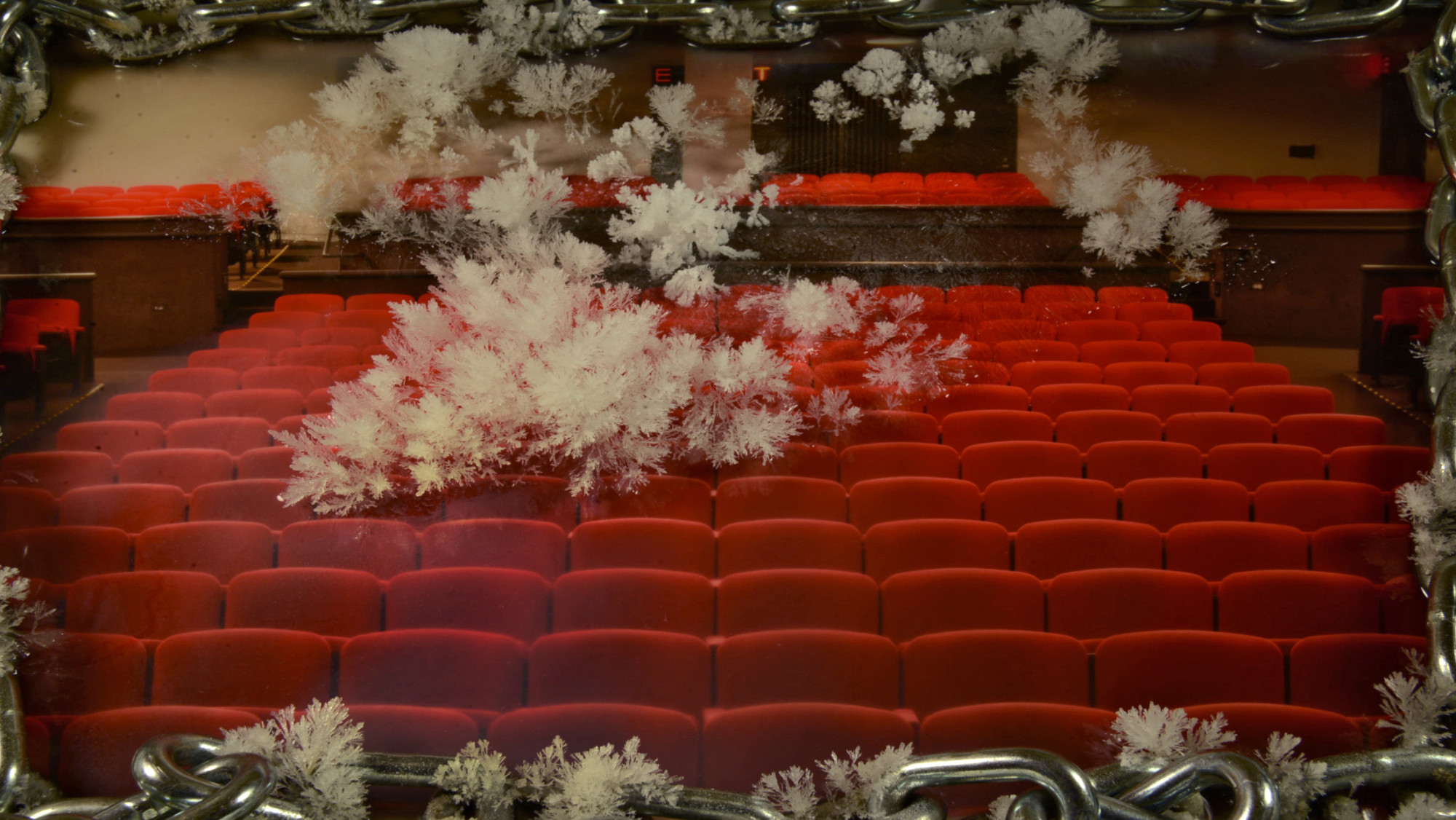Readying the release of her new album Will, Barwick dazzled the crowd with her gorgeous, ethereal music that overlaid stunning visuals from Brandt. Using mediums such as fungus, food coloring, chia seeds, black tar, Epsom salt, candy, popcorn and more, Brandt created mind altering images of destruction and restoration. Time lapse videos highlighted the decaying of found objects while Barwick's haunting and warped vocal loops provided a strange comfort against such dismay. As tar oozed from the frames of Monet prints, cameras, and theaters (including the performance space which was an extremely meta moment in and of itself), the music stimulated the mind. A spectrum of color appeared in plumes, coalescing at just the right moment before transcending into stills of tile. It was as if the melodies and rhythms massaged the overall experience and never allowed for sensory overload to kick into gear. The artists remarked how the pieces were not made in tandem and in fact, while Barwick was playing a lot of new material, she improvised certain aspects as she watched the displays unfold before her eyes. Trickling piano riffs echoed through the space while her vocals added new layers of textures to the already mesmerizing movements on screen. The unique juxtaposition provided for some very intimate and exquisite moments as both the sounds and visions complimented each other without ever becoming over powering. At times, pictures burned and flames rose on the screen and the music provided a different kind of warmth that enhanced the overall experience. Barwick's stunning vocal work was always stunning and gripped the audience with a firm, yet welcoming embrace. As the images ebbed and flowed into each other, Barwick manipulated her sounds into beautiful works of art just as compelling as anything on the screen. While the works may have been composed without each other in mind, it will be difficult to listen to this music in the future without projecting these images through memory. Their attachments to each other etched in the mind for all those in attendance and still for those not present, the music and images will still be able to stand on their own.
April 15, 2016
Julianna Barwick and Matthew Brandt played MoMA
Readying the release of her new album Will, Barwick dazzled the crowd with her gorgeous, ethereal music that overlaid stunning visuals from Brandt. Using mediums such as fungus, food coloring, chia seeds, black tar, Epsom salt, candy, popcorn and more, Brandt created mind altering images of destruction and restoration. Time lapse videos highlighted the decaying of found objects while Barwick's haunting and warped vocal loops provided a strange comfort against such dismay. As tar oozed from the frames of Monet prints, cameras, and theaters (including the performance space which was an extremely meta moment in and of itself), the music stimulated the mind. A spectrum of color appeared in plumes, coalescing at just the right moment before transcending into stills of tile. It was as if the melodies and rhythms massaged the overall experience and never allowed for sensory overload to kick into gear. The artists remarked how the pieces were not made in tandem and in fact, while Barwick was playing a lot of new material, she improvised certain aspects as she watched the displays unfold before her eyes. Trickling piano riffs echoed through the space while her vocals added new layers of textures to the already mesmerizing movements on screen. The unique juxtaposition provided for some very intimate and exquisite moments as both the sounds and visions complimented each other without ever becoming over powering. At times, pictures burned and flames rose on the screen and the music provided a different kind of warmth that enhanced the overall experience. Barwick's stunning vocal work was always stunning and gripped the audience with a firm, yet welcoming embrace. As the images ebbed and flowed into each other, Barwick manipulated her sounds into beautiful works of art just as compelling as anything on the screen. While the works may have been composed without each other in mind, it will be difficult to listen to this music in the future without projecting these images through memory. Their attachments to each other etched in the mind for all those in attendance and still for those not present, the music and images will still be able to stand on their own.
Subscribe to:
Post Comments (Atom)


No comments:
Post a Comment